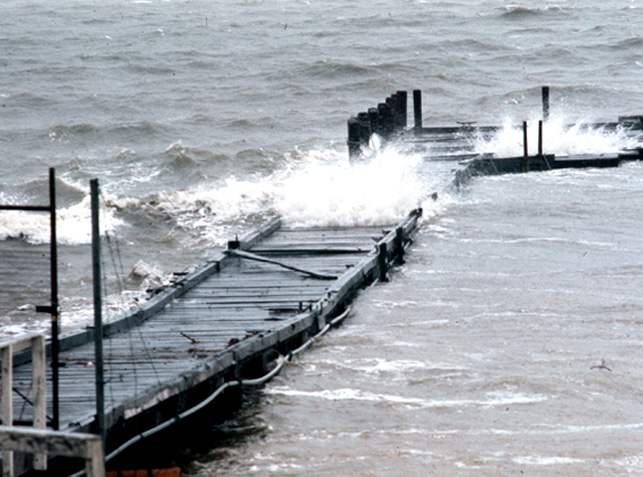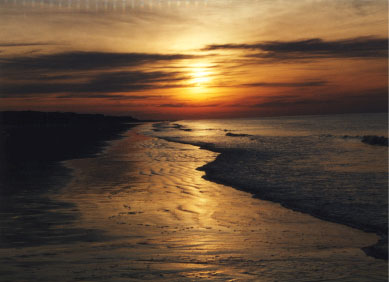
Beaches and Shores, Part 3
Sea Level Changes (continued)
Storm Surges
• Storm surges are temporary sea level rises that cause flooding in coastal areas during storms.
• Storm surges are caused primarily by wind. Other factors are also important, including lower barometric pressure, which allows a slight rise in sea level under the center of a storm.
• When the “bulge” of higher sea level arrives at a shoreline, the results can be catastrophic.
 This pier is being attacked by a storm surge. Water levels are higher than normal. [Photograph by C. Hobbs]
This pier is being attacked by a storm surge. Water levels are higher than normal. [Photograph by C. Hobbs]
Wind-Generated Waves
• Sea level goes up and down several times a minute as a result of wind-waves (or more precisely, wind-generated waves).

Wind-waves carry water and sediment back and forth across the beach several times per minute. (Photograph by Parvinder Sethi)
• Wind-waves form as wind blows over the water’s surface.
• Wave size is related to the strength of the wind, how long it lasts, and the distance the wind blows across the water (called the fetch).
• Once the waves builds to enough height, gravity then powers the waves, and they will move along the water's surface without needing the wind to push it.
• Waves are strong enough to move sediments from place to place, causing changes to the shore shape.
• Large waves at spring tide during a storm surge can greatly change the beaches, dunes, and other objects near shore.